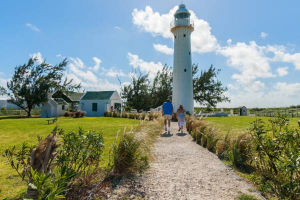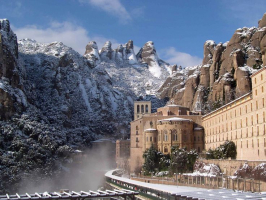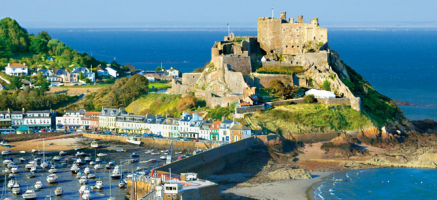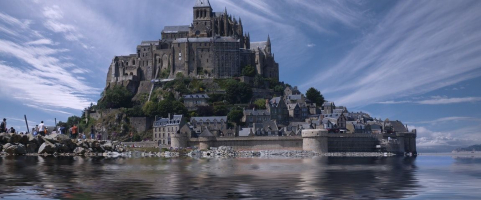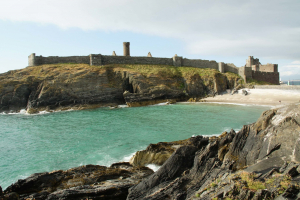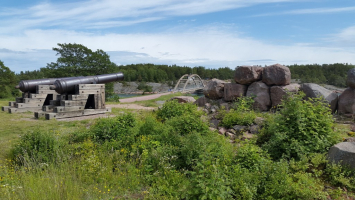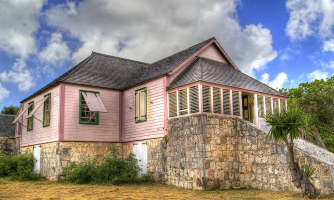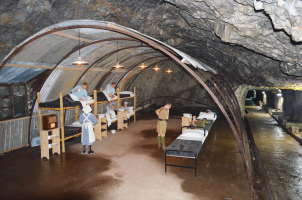Top 7 Most Beautiful Historical Sites in Falkland Islands (UK)
The main attraction of the Falklands is undoubtedly its wildlife. It boasts a wide variety of birds and marine mammals, along with some great tour options that ... read more...will get you up close to them. Not only that, Falkland Island also has a long history with amazing historical sites. The following article of Toplist will introduce you to the most beautiful historical sites in Falkland Islands.
-
Built in 1855, the Cape Pembroke lighthouse was rebuilt in 1906 and renovated in the 1990s. The first marine aid, a red and white painted wooden signpost, was built on Cape Pembroke in the 1840s. A cast-iron lighthouse was built in London by William Wilkins of Long Acre in 1854 to replace it. The red and white striped tower stands at 60 feet tall. 18 canola oil-burning lamps provided the light, which was initially lit in December 1855. In clear weather, the initial illuminant was a catalyst (reflector) and a fixed light that shined in all directions, towards the sea. Trinity House, in London, has jurisdiction over it.
Because the red stripes faded in direct sunshine, the entire tower was painted white in 1889. Governor Allardyce then reported to the Colonial Office in 1904 that he had investigated the lighthouse's base and discovered that the original wooden stakes had rotted away due to the humidity. He said that the structure's brick and cement foundation was damaged and that it was unsafe. As a result, in 1905, the decision was made to rebuild the lighthouse on a new base. The construction of this structure began in 1906. It was a large project involving 700 tons of new materials, a Trinity House supervisor, four English contractors, and a group of locals. While the repair was being done, a ship light was erected on the peninsula. The lighthouse was rebuilt about 200 meters west of its original location, and a new lantern was installed on top, bringing the total height of the lighthouse to 70 meters from the base to the weather vane.
In June 1907, the repaired light was re-illuminated. A 3rd order refractometer with a paraffin lamp was installed to replace the previous system. It is visible for 16 miles in clear weather and is mounted on a clockwise rotating pedestal with strobe lights instead of stationary lights. The tower is black with a large white stripe painted on it. After the Argentine incursion in April 1982, the lighthouse was decommissioned. On Cape Pembroke, a ground-mounted solar power plant built by the Fisheries Department in 1987 provides help for navigation.
Proposals to rebuild the lighthouse were proposed in 1990, and work has been ongoing since then. Stabilizing the tower and fixing damage that had persisted since the 1980s, including replacing damaged lantern glass, were among the main jobs. Maintenance is currently being carried out on a regular basis. The work is supported by a number of organizations, including the Government's Historic Buildings Fund and local charities, but its preservation is mostly dependent on Jane Cameron, a member of the Archives Government and a leading advocate for the preservation of the Falklands' history.
As a lighthouse with a long history, along with a solid design. Not only that, the lighthouse, when night falls, the lights emanating from the lighthouse are shimmering and fanciful. The lighthouse is wonderful, as is the walk or run out into and around the sand dunes of Cape Pembroke. Surf Bay is nearby and beautiful. As well as a few small beaches on the north shore of the Cape where dolphins surf. While going this way, visit the Atlantic Conveyor Memorial and remember those who gave everything for the cause they believed in. With these features, Cape Pembroke Lighthouse deserves to be on the list of the most beautiful historical sites in Falkland Islands.
Location: East Falkland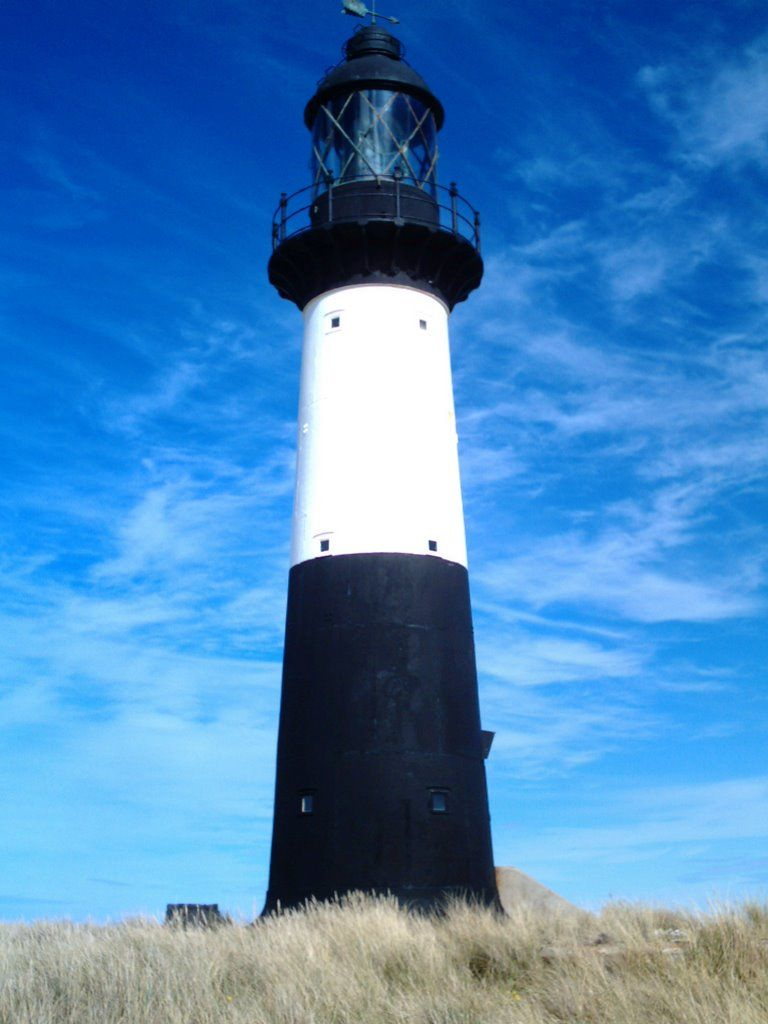
Photo: https://i.pinimg.com/ 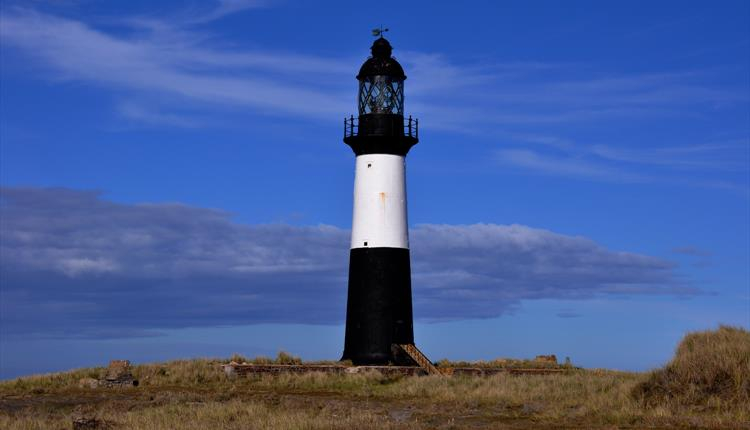
Photo: https://www.falklandislands.com/ -
The 1982 Liberation Memorial in Stanley, Falkland Islands, is a war memorial. It honors all British forces and support units who fought in the Falkland Islands War and assisted in the 1982 liberation of the Falkland Islands from Argentine military occupation. The memorial overlooks Port Stanley and is placed in front of the Secretary Building. The Memorial was proclaimed by the Governor of the Falkland Islands, Sir Rex Hunt, on Liberation Day (June 14), 1984, the two-year anniversary of the conclusion of the conflict.
The memorial has a memorial on the front of the Falkland Islands national coat of arms, surrounded by a laurel wreath, above the words "Remembrance of those who liberated us" and the date the war ended, "June 14, 1982." A bronze depiction of Britannia, the female embodiment of the island of Great Britain, stands atop the tower. Lists of British Army regiments, RAF squadrons, Royal Navy ships, and Royal Marines teams and units that took part in the conflict may be seen on the Memorial's reverse and sides. On ten plaques behind the Memorial, split by service branches, the names of the 255 British servicemen who died in the conflict are listed. Right behind the Memorial is a relief depicting famous moments from the war.
Gerald Dixon, a Falkland Islands native, designed the memorial, while David Norris sculpted the Britannia bronze. A bust of Margaret Thatcher (the United Kingdom's Prime Minister at the time of the war in 1982) was installed next to the Liberation Monument in 2015. Unlike other historic sites, it is beautiful in appearance, but for the 1982 Liberation Memorial, its beauty lies in the timeline of history, a place to pay homage to those lost in the war. painting. That beauty has put the 1982 Liberation Memorial on the list of the most beautiful historical sites in Falkland Islands.
Location: Ross Rd, Stanley, East Falkland FIQQ1ZZ Falkland Islands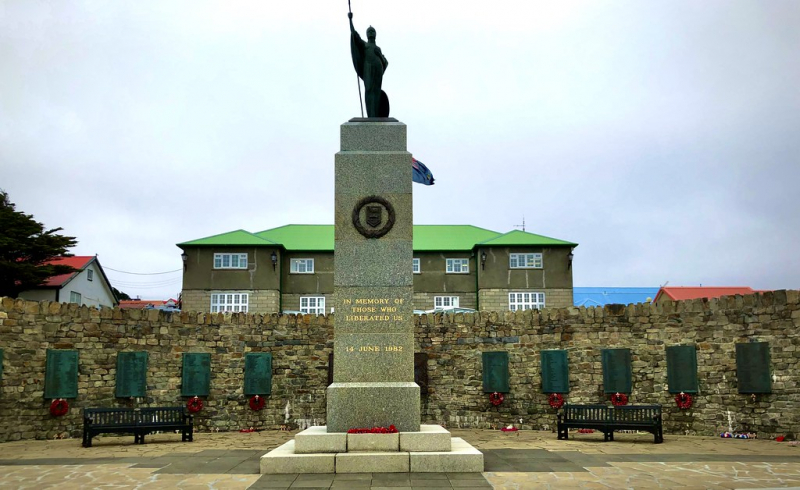
Photo: https://live.staticflickr.com/ 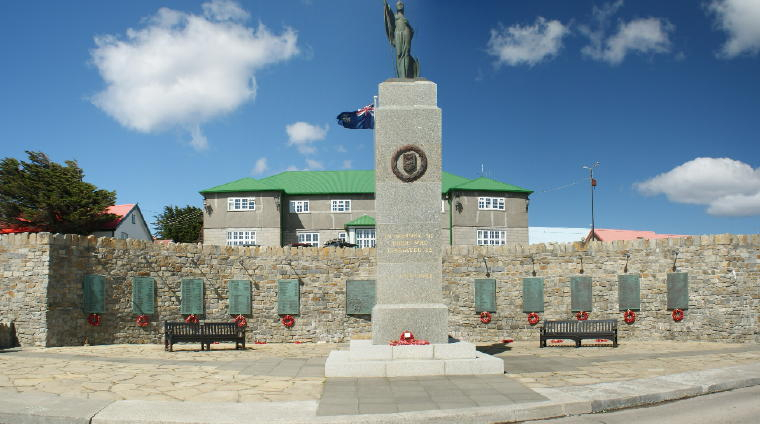
Photo: http://carsonstravels.us/ -
Christ Church Cathedral, one of the Falkland Islands' jewels, was consecrated in the town of Stanley in 1892. Although it is one of the smallest Anglican churches in the world and basic by church standards, the capital's largest church also uses the country's banknotes, and it is one of the most attractive buildings in the country. One of the most beautiful historical sites in the Falklands is Christ Church Cathedral. Its simple frame and spire aren't particularly elaborate or grand, yet it contains some gems inside, as well as an intriguing memorial in the courtyard.
To commemorate a century of British rule, an arch made of the massive jawbones of two blue whales was erected in front of the church in 1933. Despite the fact that the French had claimed the land a year before, the British claimed it in 1785. Then Spain purchased it from the French and forced the British out, only to discover that they preferred Argentina. The islands were annexed by Argentina in 1820, but the British returned in 1833, and the Falklands have been theirs ever since. In 1922, the jawbone was carried to Stanley from the South Shetland Islands and utilized to form the arch that now stands out against the church's humble backdrop.
The interior of the church is likewise simple, with wooden benches, stained glass, and 55 keychains embroidered and made by local parishioners to symbolize various features of the Falklands. However, among the usual knickknacks seen in a tiny town church is the Shackleton Banner, which is of great importance. Sir Ernest Shackleton was a British explorer who was called to the Falklands to provide economic recommendations, and his advice was quite successful. Shackleton is a member of the Order of the Garter, which is the highest honor awarded to horsemen.
The mandate's flag was supposed to be hung in Windsor's St George's Chapel, but Shackleton's son left the estate to Christ Church Cathedral. It's the only banner of its kind across the entire continent of South America.
Location: Ross Road in Stanley, Falkland Islands
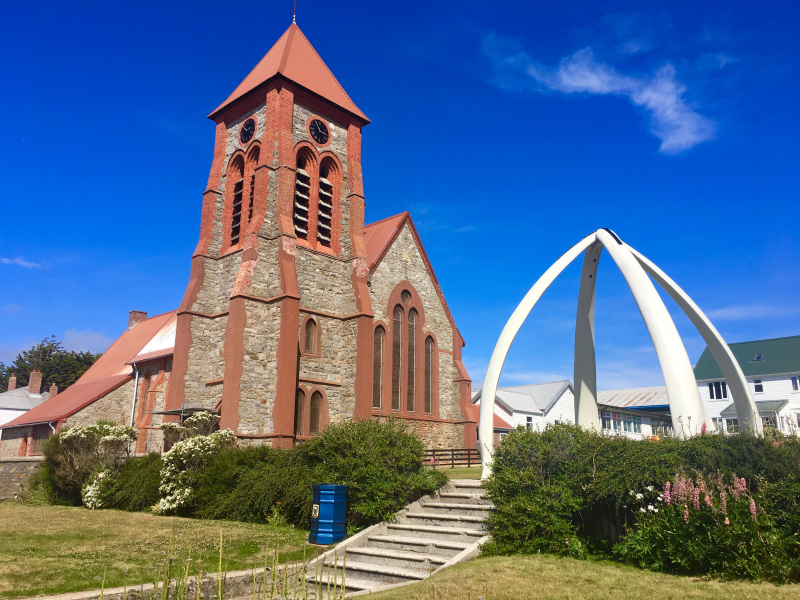
Photo: https://i.pinimg.com/ 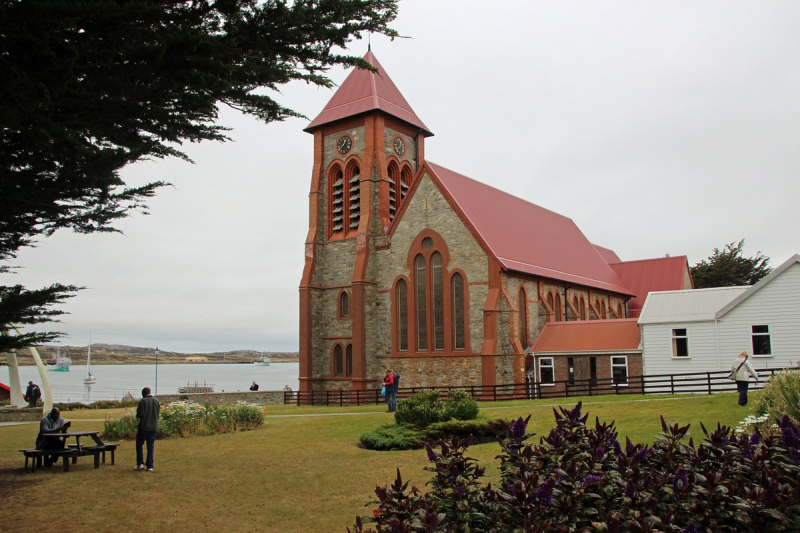
Photo: https://www.tripadvisor.com/ -
This three-masted rusty iron bar, dubbed "Lady Liz" by locals, washed up on Whalebone Cove in February 1936 and is still there today. On June 4, 1879, Lady Elizabeth was launched from Sunderland, England. Her predecessor, the Lady Elizabeth, sank off the coast of Western Australia in 1878, and she was built to replace her. For more than 30 years, the second Lady Elizabeth successfully sailed around the world carrying freight.
Lady Elizabeth left Vancouver with a supply of lumber on December 4, 1912. She visited Mozambique. She meets powerful daughters while sailing over Cape Horn. The ship was destroyed, a large portion of the cargo was lost, and four men were thrown overboard. When she hit with Uranae Rock, off Volunteer Point, while limping to Berkley Sound on her way to Port Stanley for repairs, she suffered catastrophic hull damage. It was declared undeserving when it arrived in Port Stanley and purchased by the Falkland Island Company for use as floating wood storage.
Lady Elizabeth was pummeled by a strong storm on February 17, 1936. She drifted into Whalebone Bay and washed up on a shallow sandbar after breaking free from her mooring line. She had been vandalized for years, with opportunists stealing her wood and belongings. She is still swaggering, imposing, and proud today. Her current owner, the Crown Receiver of Wrecks, intended to turn her into a floating museum, but the project was put on hold due to a lack of funds.
Lady Elizabeth is still alive and well in Whalebone Cove, where she is partially buried. During high tide, the ship was said to rock back and forth due to smashing waves. Many of the ship's accouterments, such as the main anchor crank, the grooves holding the two lifeboats, part of the crow's nest, part of the spiral staircase, and much of her wooden deck, are still linked with Lady Elizabeth. However, the ship's hull had begun to rust, causing enormous holes, and the majority of the ship was severely rusted. The ship's bottom is inundated during high tide. On the inside of the ship, there are still areas of paint. The starboard bulkhead had fallen loose because some of the iron studs had corroded.
During a storm in the winter of 2008, the bow shattered. The dismantling of the bowsprit was debated by the Falkland Islands Museum and National Trust. Despite the fact that only historical ruins are left, the ship nonetheless has its unique historical charm.
Location: Whalebone Cove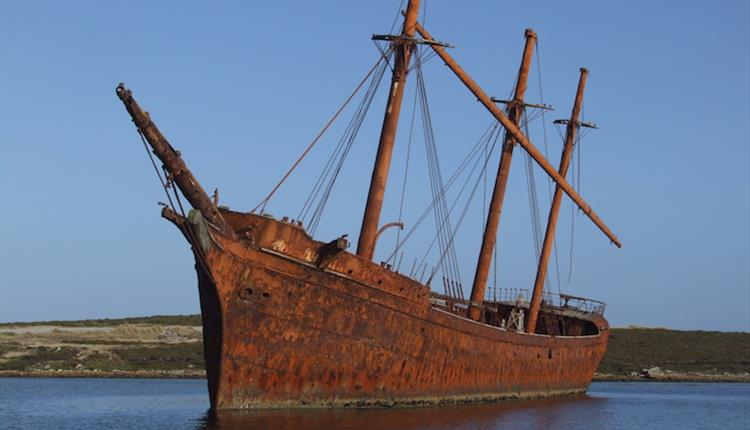
Photo: https://www.falklandislands.com/ 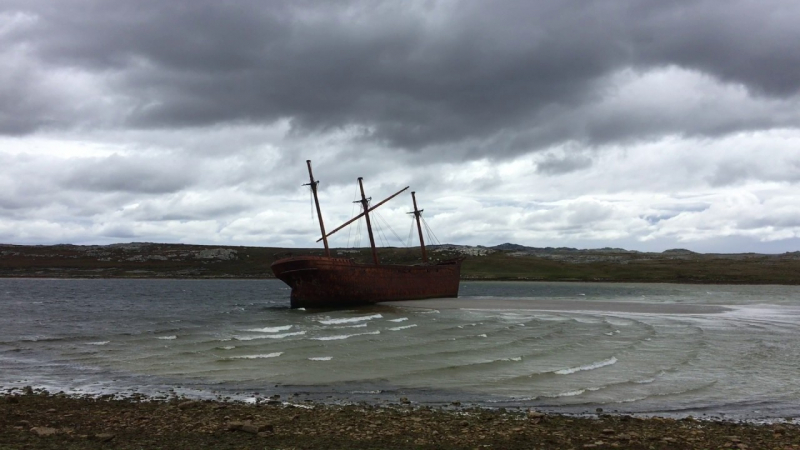
Photo: https://i.ytimg.com/ -
Atop this desolate landscape, white crosses stood in orderly rows. More than 200 Argentine soldiers were killed in the Falklands War, and they are buried there. Many of the bodies of dead Argentinians were left on the Falkland Islands in makeshift graves after the British reclaimed the islands on June 14, 1982, rather than being transferred back to Argentina. Buenos Aires refused to allow the remains of these soldiers to be returned to Argentina, alleging that they were buried in their motherland.
The British ordered the construction of the Argentine Military Cemetery in December 1982 after they were unable to return the fallen soldiers to Argentina. The British provided the men a Fallen Argentina is buried in a Christian style with military honors once the Army Cemetery was completed. The British Armed Forces went to great lengths to identify and mark the graves of all Argentine military personnel buried at the cemetery. However, because they have not been recognized, a tiny number of graves bear the inscription "Argentine soldier known only to God."
The Argentinian Military Cemetery is located on a mountaintop on the Falkland Islands. The hill functions as a natural barrier, shielding the property from the ferocious winds that blight the Falkland Islands. The wind died away as we hiked up the hill to the cemetery, providing a lovely final resting place for the 237 troops stationed there.
With respect and gratitude for sacrificing his life for the country. Over the years, it is still the same, that is the beauty of history. Although it is only a burial site, the Argentine Military Cemetery is also considered one of the most beautiful historical sites in Falkland Islands.
Location: the Falkland Islands, at the top of a hill.
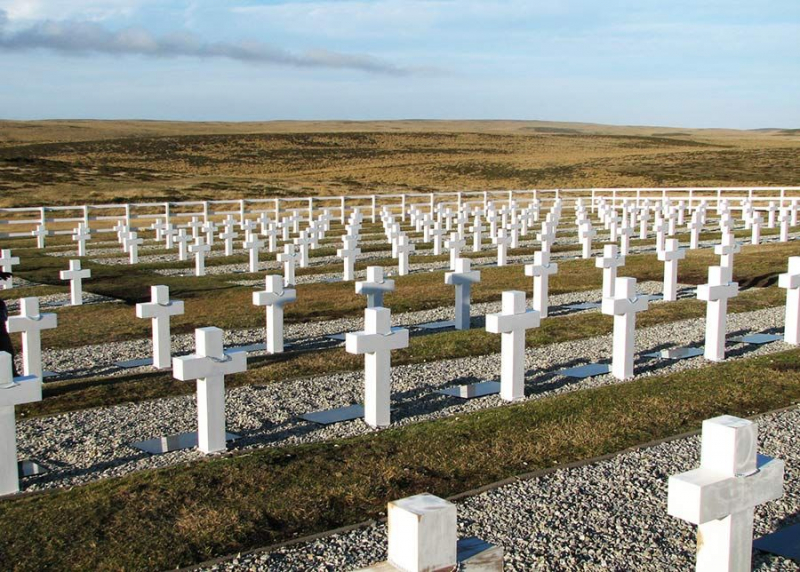
Photo: https://en.mercopress.com/ 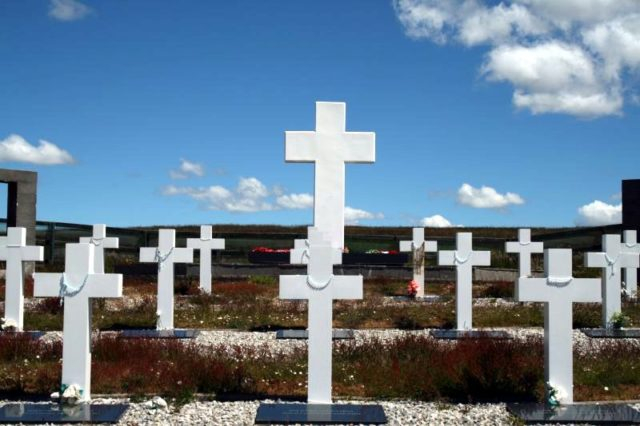
Photo: https://www.warhistoryonline.com/ -
Many British servicemen who died in fighting during the Falklands War were buried in makeshift graves until the war was over and a permanent cemetery could be built. It was common at the time for British men who were slain in battle to be buried as close to their deaths as possible, and a memorial to their memory to be created as soon as it was safe.
As the Falklands War came to a close, many of the families of British troops who had died felt that their loved ones should be returned to the United Kingdom. In November 1982, the amphibious ship Sir Bedivere was charged with repatriating and bringing back to the UK 63 British soldiers and one civilian contractor. After the initial beach landings at San Carlos during the war, the British Government allowed the building of the Blue Beach Military Cemetery on the precise spot that the 3rd Rangers Brigade picked as its headquarters. On April 10, 1983, the cemetery and memorial were finished and inaugurated. The site was originally the final resting place of 13 British soldiers who died in the fight. Captain John Belt of the Army Air Corps died in an accidental helicopter crash in the Falkland Islands two years after the war ended. His family chose Blue Beach Military Cemetery for his burial, which has since become the final resting place for 14 troops.
The Commonwealth War Graves Commission took over the design and building of a cemetery and memorial in 1982, at the request of the Department of Defense. The MOD approved the ideas on November 12, 1982, at a total cost of £50,000. The construction was finished on April 10, 1983, with the help of 8 Royal Engineers from the Field Squadron and the Gurkhas Brigade. Cumbria's Orton Scar limestone stele and memorial plaques are made of pale green slate.
The graves are split into two sections, each having seven tombs. The Parachute Cemetery, to the right, is named for the four paratroopers who are buried there, including Lieutenant Colonel "H" Jones. Two Royal Signals officers and one Air Force Air Self-Defense Force pilot were among those killed when their Gazelle helicopter was mistakenly shot down by HMS Cardiff. Seven further steles, erected in the same manner as the remains of seven Royal Marines, stand directly across the street. Captain Belt's burial is apart from the rest of the cemetery, within the right entrance, which was erected after it was finished. The San Carlos Museum, which houses images and artifacts from the fighting, is close by.
A memorial service was held at the cemetery on May 21, 2002, the 20th anniversary of the landings. In honor of those who died in the operation, more than 300 islanders and officials from the garrison joined the Governor of the Falklands. The cemetery landscaping around the graves had been cleaned and updated before this ceremony, with the installation of wooden planks, gravel pouring, and tree planting. Contract organizations working at the Mount Pleasant military post organize and carry out this task.
Built on a green lawn, Blue Beach Military Cemetery is more peaceful than ever. Not only that, this place is also a place of reverence and worship for the deceased. And over time, Blue Beach Military Cemetery gives itself a historical beauty, that is the heroism and mettle of those who have sacrificed. Today, the Blue Beach Military Cemetery ranks among the most beautiful historic sites in Falkland Islands.
Location: San Carlos, Falkland.
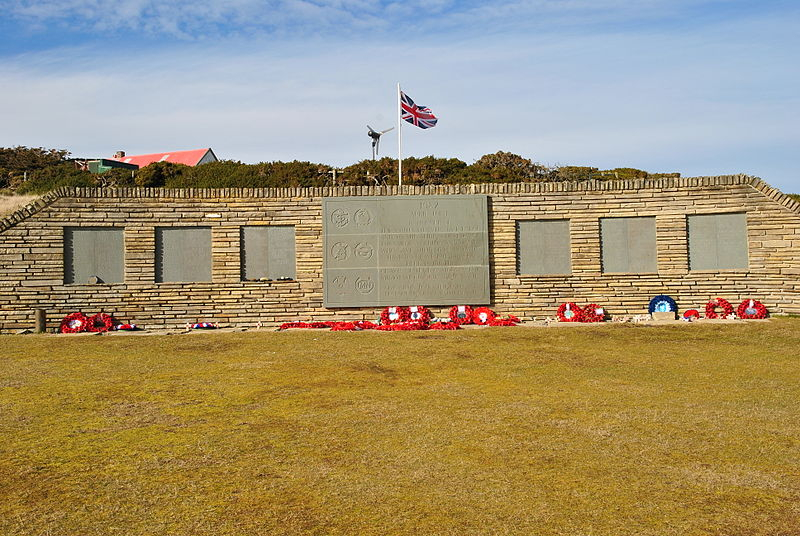
Photo: https://www.tracesofwar.com/ 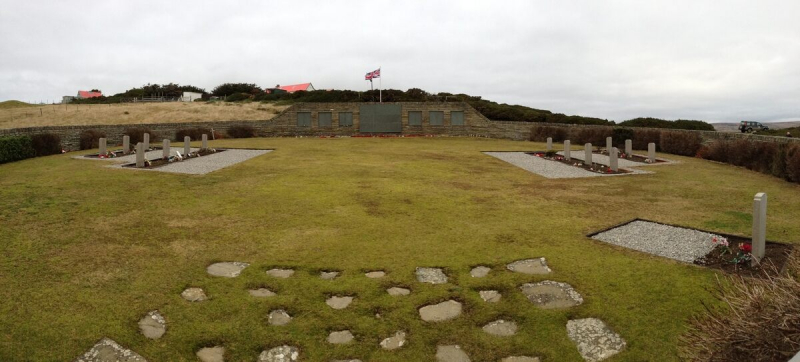
Photo: https://assets.atlasobscura.com/ -
Oliver Barratt's Southern Antarctic Monument is divided into two sections that are separated by 8,000 kilometers. Roderick Rhys-Jones, president of the British Antarctic Monuments Trust (BAMT), told the crowd that the northern part of the sculpture, consisting of two English oak columns carved and positioned to enclose an extended ellipse between them, had been erected on the grounds of the Polar Institute Scott in Cambridge. As if the wooden north half were its molding, the south monument offers that shape in stainless steel. The mirror-polished metal needle, standing 3.25m tall and 350mm broad at its widest point, slanted south, notably towards Stanley Harbor, where the dead would depart for the South Pole.
Oliver Barratt's design, according to the British Antarctic Monuments Trust, depicts the scientific and natural ties that exist between Britain and Antarctica, while also acknowledging the emotional and physical barriers that astronomers have faced. It is necessary for adventurers and their families to go through this. A commemorative plaque has also been put in the crypt of St Paul's Cathedral in London, in addition to the detachable sculpture. The British Antarctic Survey's 28 men and one woman who have died in Antarctica since the first permanent research site was founded in 1944 are commemorated at the Antarctic Memorial. The stainless steel hands of the memorial, which are housed in the old Foundry, reflect the lake and the town of Stanley.
Despite the simple design of the structure, the Antarctic Memorial has a very noble meaning, which is to honor those who have made merit. A historic beauty has resided in the memorial. That is not the beauty on the outside, but behind there is deep, humane beauty. That is why today the Antarctic Monument is on the list of the most beautiful historical sites in Falkland Islands.
Location: the South Atlantic Ocean
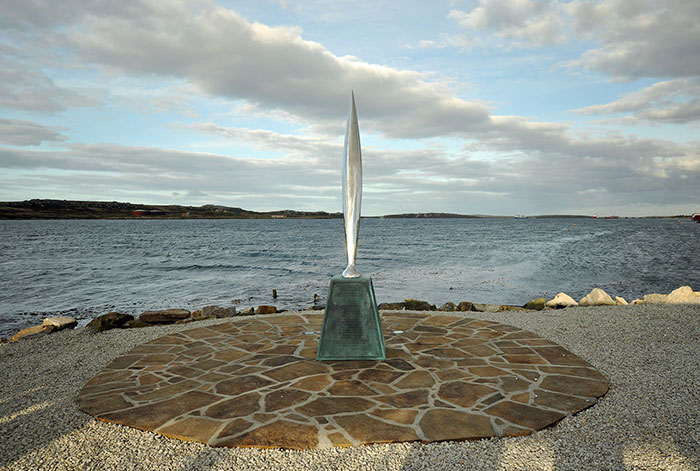
Photo: https://www.antarctic-monument.org/ 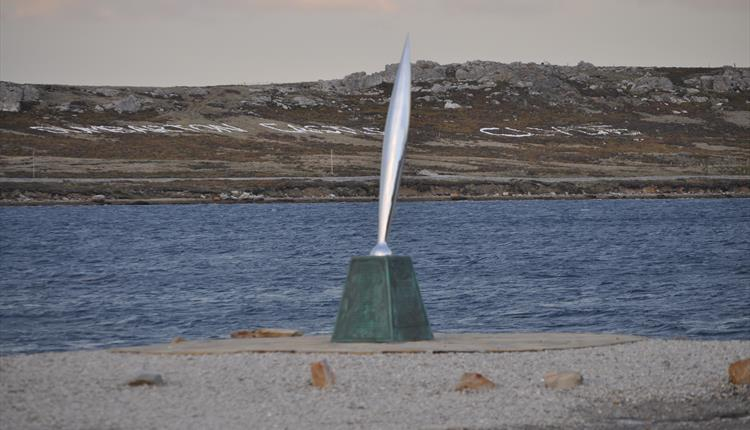
Photo: https://www.falklandislands.com/










